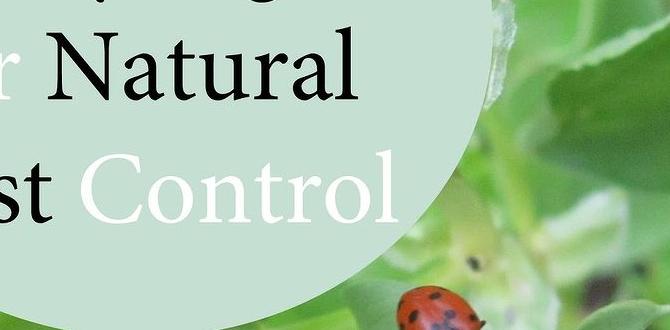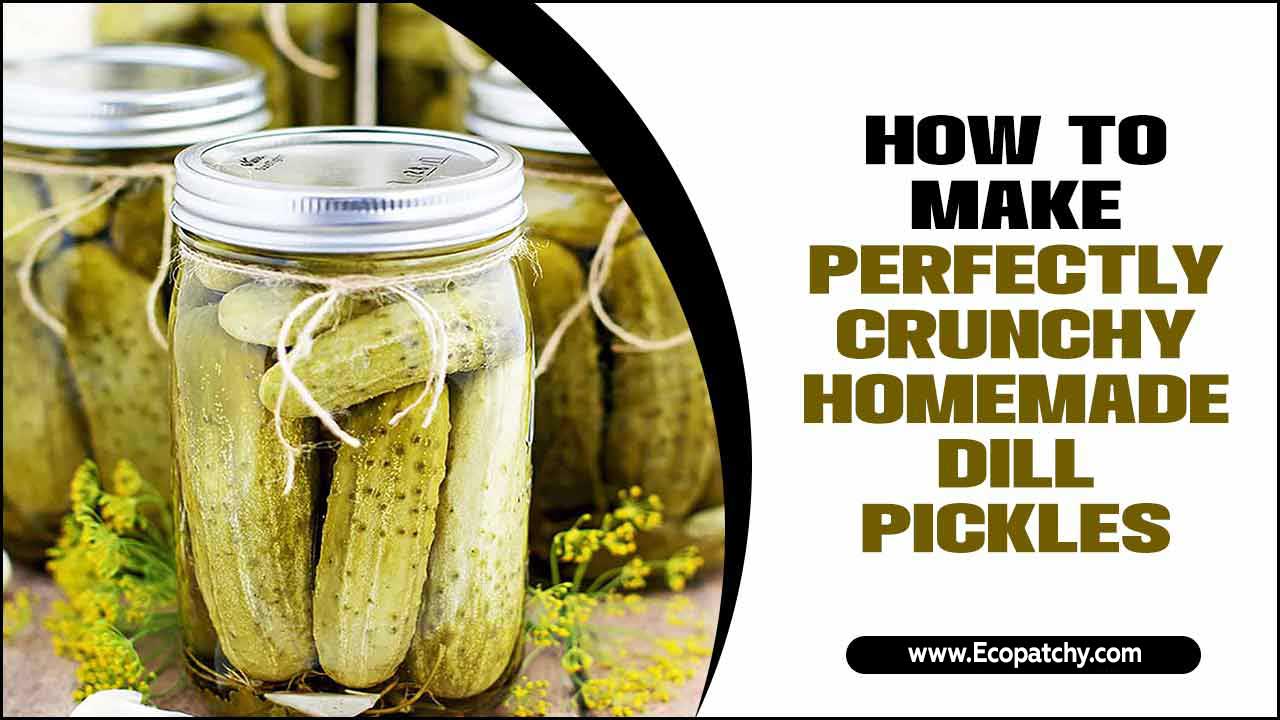Have you ever seen a ladybug in your garden? These little beetles are not just cute; they can be heroes for your plants. Ladybugs like to munch on pests that can harm your flowers and veggies. Have you ever wondered how many annoying insects they can eat in one day? A ladybug can eat fifty aphids in a single day!
Imagine this: You have a beautiful garden and want to keep it healthy. What if something could help it thrive without using harmful chemicals? That’s where ladybugs come in. They are nature’s tiny gardeners, ready to help you grow strong and vibrant plants.
In this article, we will explore why ladybugs are good for gardens. Discover how they protect your plants and why having them around is a smart choice. Get ready to learn how these small creatures play a big role in helping your garden flourish!
Why Are Ladybugs Good For Gardens? Discover Their Benefits

Why Are Ladybugs Good for Gardens
Ladybugs are amazing helpers in gardens. They eat pests like aphids and mites, which can harm plants. By controlling these harmful insects, ladybugs help keep gardens healthy and thriving. Did you know one ladybug can eat over 5,000 aphids in its lifetime? This makes them a natural pest control solution. Plus, their bright colors add a delightful touch to your garden. With ladybugs around, your plants can grow strong and beautiful!Understanding Ladybugs
Description of ladybugs and their various species. Life cycle of ladybugs and their habitat preferences.Ladybugs are small, colorful beetles that are loved by many. They come in different species, mainly red with black spots. Some can be orange or yellow! These tiny friends go through four life stages: egg, larva, pupa, and adult—kind of like a superhero transformation! Ladybugs prefer warm, sunny spots, like gardens and fields. So, if you find one on a leaf, give it a wave; it’s just doing its gardening job!
| Life Stage | Description |
|---|---|
| Egg | Small, often laid on leaves. |
| Larva | Looks like a tiny alligator and loves to eat pests! |
| Pupa | A resting stage before becoming an adult. |
| Adult | Colorful with a big appetite for insects! |
Did you know ladybugs can eat as many as 5,000 aphids in their lifetime? These little munchers are here to save the day in your garden!
The Role of Ladybugs in Pest Control
How ladybugs prey on harmful garden pests. The effectiveness of ladybugs compared to chemical pesticides.
Ladybugs are tiny hunters in your garden. They love to eat pesky pests like aphids and spider mites. One ladybug can eat up to 50 aphids in a single day! This makes them very useful for controlling harmful bugs. They are safe for plants and don’t harm helpful insects. Unlike chemical pesticides, ladybugs don’t leave dangerous residues. They help gardens stay healthy, thriving naturally.
How Effective Are Ladybugs Compared to Chemicals?
Ladybugs work better than chemical pesticides in many ways. They are safe for the environment and help other creatures thrive, while chemicals can harm plants and pets.
- Ladybugs promote a healthy ecosystem.
- They control pests without chemicals.
- They are easy to attract in gardens.
Benefits of Ladybugs to Garden Health
Improvement of soil quality through organic matter decomposition. Increase in biodiversity and ecosystem balance.Ladybugs are tiny helpers in the garden. They improve soil quality by breaking down organic matter. This process feeds the plants. Healthy soil leads to strong plants. Ladybugs also boost biodiversity. They help create a balanced ecosystem. More creatures in your garden bring harmony. This balance helps protect plants from pests.
- Soil gets nutrients from decaying leaves and plants.
- Ladybugs attract other beneficial insects.
- A balanced ecosystem keeps harmful pests away.
Why are ladybugs good for gardens?
Ladybugs are good for gardens because they eat harmful pests. They also help improve soil quality and bring harmony to the ecosystem. Healthy plants grow better with ladybugs around!
Attracting Ladybugs to Your Garden
Tips for creating a ladybugfriendly environment. Recommended plants and habitat structures.Want to invite ladybugs to your garden? Start by planting the right flowers! Consider options like daisies and marigolds. These colorful blooms are ladybug magnets. Another tip is to add some small rocks or logs. These give ladybugs cozy places to hide. Don’t forget to skip the pesticides; they scare off our little friends! Keep it natural and fun. Your garden can become a ladybug playground! Remember, happy ladybugs equal healthy gardens.
| Recommended Plants | Habitat Structures |
|---|---|
| Daisies | Small rocks |
| Marigolds | Logs |
| Nasturtiums | Plants with plenty of leaves |
Common Misconceptions about Ladybugs
Clarifying myths surrounding ladybugs and their impact on gardens. The difference between beneficial and harmful ladybug species.
Many believe all ladybugs are helpful, but that’s a common mix-up! Some ladybugs can actually harm your garden. For example, the Asian lady beetle is not as friendly as our classic red ladybug. It can munch on plants and may even bite! To keep your garden thriving, it’s important to invite the right bugs. A smart gardener knows the difference between the good guys and the troublemakers. So, let’s keep the party for the lovely ladybugs who really want to help!
Supporting Ladybug Populations
The importance of conserving ladybug habitats. Simple actions gardeners can take to protect ladybug populations.Creating a happy home for ladybugs boosts their population. These tiny helpers love to munch on pests like aphids. To keep their habitats safe, gardeners should avoid harmful pesticides. Instead, planting flowers like marigolds or daisies can attract ladybugs. Simple things matter! You can even leave small patches of wild plants. Remember, a ladybug’s home is its castle! Here’s a quick table for tips:
| Action | Benefit |
|---|---|
| Plant diverse flowers | Attracts ladybugs |
| Avoid pesticides | Protects ladybug habitats |
| Leave some weeds | Provides shelter |
With these small changes, your garden can become a ladybug paradise!
Conclusion
In conclusion, ladybugs are great for our gardens. They eat pests like aphids, helping our plants grow healthy. Inviting ladybugs can save us time and effort in pest control. To attract them, we can plant flowers they love. So, let’s welcome ladybugs and learn more about how they improve our gardens! Happy gardening!FAQs
What Specific Pests Do Ladybugs Help Control In Garden Settings?Ladybugs are great helpers in gardens. They love to eat pests like aphids, which are tiny bugs that eat plants. They also munch on spider mites and whiteflies, keeping our plants safe. If you have ladybugs in your garden, they can help your flowers and veggies grow better!
How Do Ladybugs Contribute To The Overall Health Of A Garden Ecosystem?Ladybugs are helpful friends in our gardens. They eat tiny pests like aphids, which can harm plants. By keeping these pests under control, ladybugs help plants grow healthy. Their presence makes gardens more beautiful and balanced. So, when you see a ladybug, know it’s working hard for your garden!
What Are Some Natural Methods To Attract Ladybugs To Your Garden?To attract ladybugs to your garden, you can plant flowers like marigolds and daisies. They love these colorful blooms! You can also grow herbs like dill and fennel. Ladybugs eat pests like aphids, so make sure to leave some insects in your garden for them to munch on. Lastly, avoid using chemical sprays, since they can scare ladybugs away.
Can Ladybugs Impact The Pollination Process In Gardens, And If So, How?Yes, ladybugs can help in gardens! While they are not main pollinators like bees, they do visit flowers. As they move from flower to flower, they can carry some pollen on their bodies. This helps plants make seeds and fruits. So, ladybugs can be good for our gardens in their own special way!
What Are The Life Cycle Stages Of Ladybugs, And How Do They Affect Their Effectiveness As Garden Helpers?Ladybugs go through four life stages: egg, larva, pupa, and adult. First, they lay eggs on plants. Then, tiny larvae eat lots of pests like aphids. After that, they turn into pupae, and finally, they become adult ladybugs. Each stage helps control garden pests, making ladybugs great helpers for your plants!
{“@context”:”https://schema.org”,”@type”: “FAQPage”,”mainEntity”:[{“@type”: “Question”,”name”: “What Specific Pests Do Ladybugs Help Control In Garden Settings? “,”acceptedAnswer”: {“@type”: “Answer”,”text”: “Ladybugs are great helpers in gardens. They love to eat pests like aphids, which are tiny bugs that eat plants. They also munch on spider mites and whiteflies, keeping our plants safe. If you have ladybugs in your garden, they can help your flowers and veggies grow better!”}},{“@type”: “Question”,”name”: “How Do Ladybugs Contribute To The Overall Health Of A Garden Ecosystem? “,”acceptedAnswer”: {“@type”: “Answer”,”text”: “Ladybugs are helpful friends in our gardens. They eat tiny pests like aphids, which can harm plants. By keeping these pests under control, ladybugs help plants grow healthy. Their presence makes gardens more beautiful and balanced. So, when you see a ladybug, know it’s working hard for your garden!”}},{“@type”: “Question”,”name”: “What Are Some Natural Methods To Attract Ladybugs To Your Garden? “,”acceptedAnswer”: {“@type”: “Answer”,”text”: “To attract ladybugs to your garden, you can plant flowers like marigolds and daisies. They love these colorful blooms! You can also grow herbs like dill and fennel. Ladybugs eat pests like aphids, so make sure to leave some insects in your garden for them to munch on. Lastly, avoid using chemical sprays, since they can scare ladybugs away.”}},{“@type”: “Question”,”name”: “Can Ladybugs Impact The Pollination Process In Gardens, And If So, How? “,”acceptedAnswer”: {“@type”: “Answer”,”text”: “Yes, ladybugs can help in gardens! While they are not main pollinators like bees, they do visit flowers. As they move from flower to flower, they can carry some pollen on their bodies. This helps plants make seeds and fruits. So, ladybugs can be good for our gardens in their own special way!”}},{“@type”: “Question”,”name”: “What Are The Life Cycle Stages Of Ladybugs, And How Do They Affect Their Effectiveness As Garden Helpers? “,”acceptedAnswer”: {“@type”: “Answer”,”text”: “Ladybugs go through four life stages: egg, larva, pupa, and adult. First, they lay eggs on plants. Then, tiny larvae eat lots of pests like aphids. After that, they turn into pupae, and finally, they become adult ladybugs. Each stage helps control garden pests, making ladybugs great helpers for your plants!”}}]}







